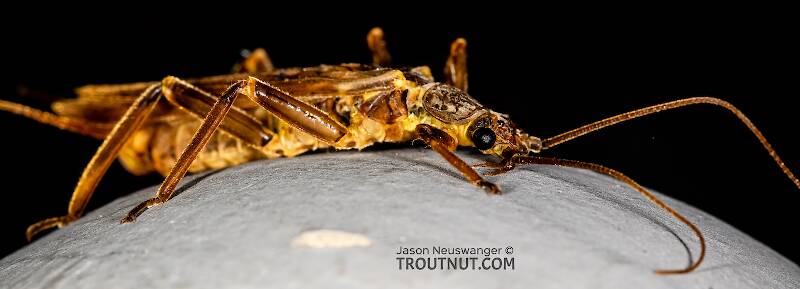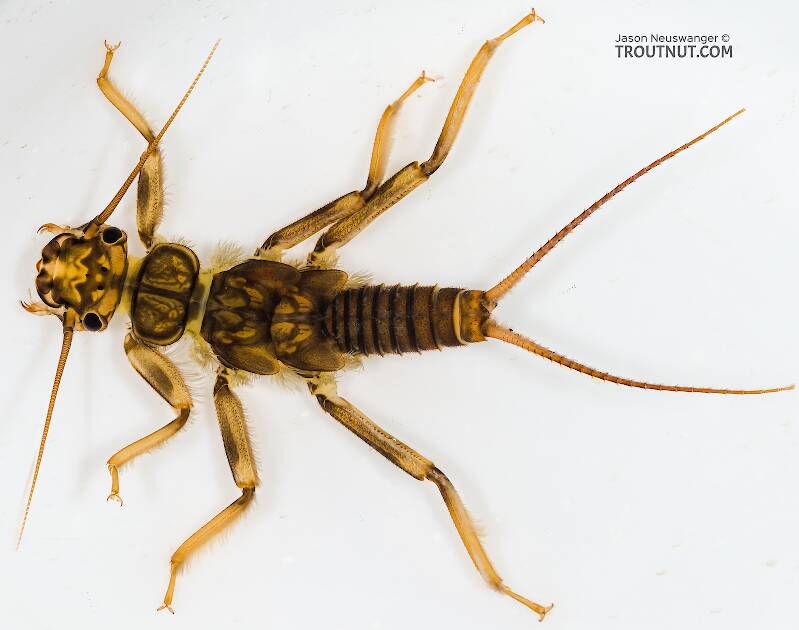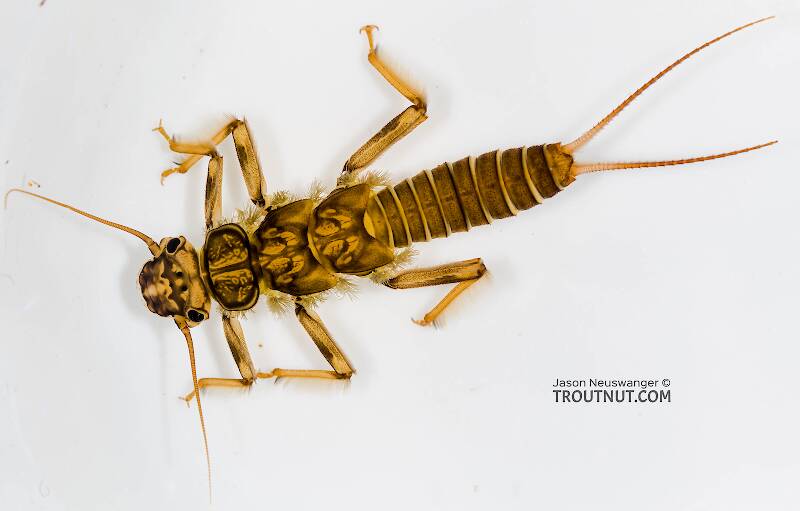
Blue-winged Olives
Baetis
Tiny Baetis mayflies are perhaps the most commonly encountered and imitated by anglers on all American trout streams due to their great abundance, widespread distribution, and trout-friendly emergence habits.

Stonefly Species Doroneuria baumanni (Golden Stones)
Species Range
Physical description
Most physical descriptions on Troutnut are direct or slightly edited quotes from the original scientific sources describing or updating the species, although there may be errors in copying them to this website. Such descriptions aren't always definitive, because species often turn out to be more variable than the original describers observed. In some cases, only a single specimen was described! However, they are useful starting points.
Description from GBIFthe Global Biodiversity Information Facility
Source: Eggs Of Western Nearctic Acroneuriinae (Plecoptera: Perlidae)
Egg. Outline oval with short, narrow collar (Fig. 9). Egg length ca. 500 µm, equatorial width ca. 400 µm, collar length ca. 20 µm width ca. 50 µm Chorionic surface coarsely punctate with shallow pits over middle half of egg (Figs 10, 12.); punctate zone ca. 260 µm wide; area around collar and a narrow opercular ring around lid lack pits; some pits on lid form obscure follicle cell impression walls. Micropylar row located on lid (Fig. 11); orifices raised, canals not clearly visible on surface.
Specimens of the Stonefly Species Doroneuria baumanni
1 Male Adult

2 Nymphs
Start a Discussion of Doroneuria baumanni
Stonefly Species Doroneuria baumanni (Golden Stones)
Species Range
Common Names
Resources
- NatureServe
- Integrated Taxonomic Information System
- Global Biodiversity Information Facility
- Described by Stark, B.P. & Gaufin, A.R. (1974) The species of Calineuria and Doroneuria (Plecoptera: Perlidae). The Great Basin Naturalist 34, 83–93.




